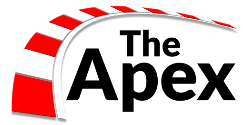‘Spot On’ Aeroscreen Shines in First On-Track Test

Veteran NTT IndyCar Series drivers Scott Dixon and Will Power tested the series’ new cockpit protection device at the Indianapolis Motor Speedway under the watchful eye of INDYCAR and Red Bull Advanced Technologies and came away impressed with the Aeroscreen, going so far as to dub the device ready for racing.
While the series isn’t set to subject the safety solution to race conditions until the season-opening Firestone Grand Prix of St. Petersburg on March 15, 2020, the high-speed oval test in Speedway, Indiana represented the first of four scheduled outings through the end of 2019 that will provide valuable data in advance of the Aeroscreen’s competition debut next year.
Testing the device for the first time outside of a simulator, Dixon and Power logged almost 650 miles around the 2.5-mile oval without incident, suggesting that INDYCAR and RBAT have developed a solution that is drivable on at least one of the four distinct types of tracks its premier series races at.
The Aeroscreen devices affixed to the cars of Dixon and Power featured all elements of the RBAT design including the underlying titanium framework attached to the Dallara IR-12 chassis in three key locations — the chassis centerline where the Advanced Frontal Protection Device mounted and both sides of the roll hoop. The drivers tested various solutions for cooling which incorporated both a Dallara-designed cooling duct as well as add-on pieces intended to deflect air from the top of the screen into the cockpit.

Even with the airflow allowances creating some air movement inside the car, Dixon noted the biggest difference between an open-cockpit Indy car and one fitted with an Aeroscreen is the sound he hears at full speed.
“We went through a bunch of configurations for cooling and where we can kind of push the air to control the helmet and how it feels and how much pressure you have there,” five-time IndyCar champion Dixon said. “Ultimately, it’s just very quiet. I can hear my radio for a change; normally I can’t hear that so that’s kind of nice.”
With quietness being Dixon’s primary takeaway, many of the concerns surrounding the Aeroscreen — ingress and egress, visibility and added weight — were dispelled by both drivers. Dixon and Power reported that getting into and out of the cockpit, while a different process with the additional bodywork, wasn’t overly difficult and would improve with time and practice.
Visibility was not an issue and, with further development set to take place on elements such as tear-offs and water dispersal, both drivers surmised that seeing through the Aeroscreen will get better as development progresses.

Worries about putting additional weight forward of the cockpit were perhaps the most prominent ahead of the test, with some suggesting that Firestone may need to develop all-new tires for use in 2020, potentially invalidating every race engineer’s setup book. Based on Power’s experience at IMS, this may not entirely be the case.
“It actually makes the car more forgiving, the weight distribution, because this car, when it was built, came with too far rearward weight distribution so everyone has done what they can to move it forward,” said Power. “So it actually puts it in a pretty good window, in my opinion, of weight distribution, and yeah, with a few adjustments, it worked pretty well.
“I felt over the whole stint there was a pretty good balance. It really didn’t feel that different to what we had, it’s just a bit more forgiving now because you’ve got more weight up in front.”
With the basic design of the Aeroscreen receiving near-complete approval from Dixon and Power, both drivers agreed that the device could be raced immediately if necessary. Power was the more effusive of the two drivers.
“You could race this weekend no problem,” said Power. “You could do that. That wouldn’t be an issue.”
“Yeah, totally agree,” added Dixon. “I think, as we’ve been working on it today, there’s some configurations that you could adjust and those might be personal things as well but I think it’s spot on. It’s good to go.”
Given that both drivers reached race speeds with their Aeroscreen-equipped cars — Power topped out at 224.591 mph in his Team Penske Chevrolet while Dixon was just a hair slower at 224.501 mph in his Chip Ganassi Racing Honda — it seems as if speed and drag won’t be an issue with the pair joins 31 other drivers for the 104th Running of the Indianapolis 500 on May 24.
Further testing at Barber Motorsports Park and Richmond Raceway will put the titanium-backed polycarbonate screen to the test at a road course and short oval, respectively, while Sebring International Raceway will stand in for a street circuit as the series’ final scheduled testing venue in November.
The Aeroscreen will next be on track Oct. 12 with Ryan Hunter-Reay and Simon Pagenaud behind the controls at Barber to discover how the device will perform on a natural terrain road course for the first time.
Ben was hooked after witnessing Dario Franchitti's victory at the 2009 Iowa Corn Indy 250 and began providing media coverage from IndyCar events in 2015. If IndyCar is on track, he can be found live-posting and updating The Apex's Race Reports from his iPad Pro.
